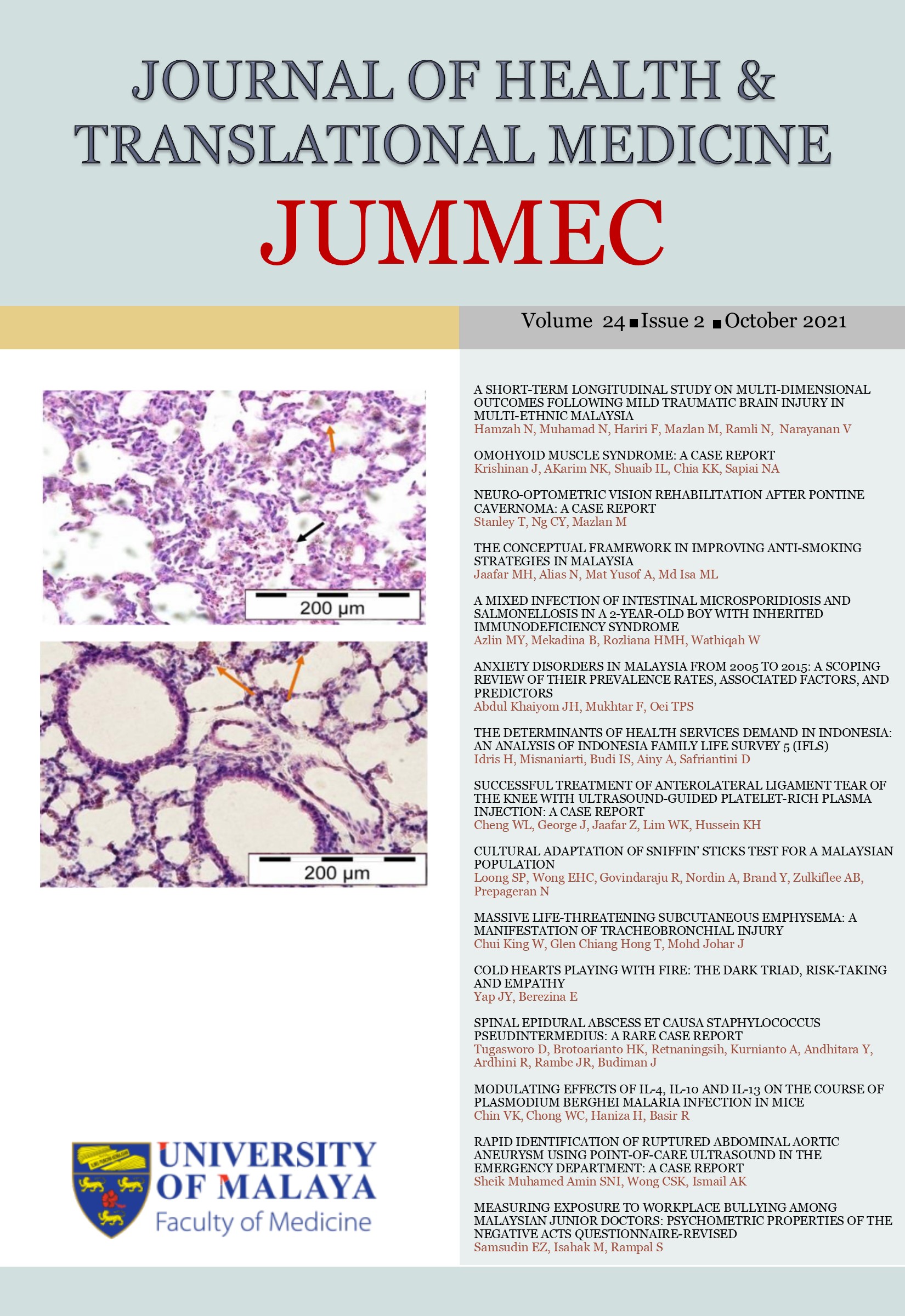CULTURAL ADAPTATION OF SNIFFIN’ STICKS TEST FOR A MALAYSIAN POPULATION
Received 2020-11-09; Accepted 2021-03-09; Published 2021-09-18
DOI:
https://doi.org/10.22452/jummec.vol24no2.9Keywords:
Sniffin’ Sticks Test, Quantitative Olfactory Test, Cultural AdaptationAbstract
Introduction: Sniffin’ Stick test is a quantitative olfactory test first introduced in the 1990s and has since been used in several countries after cultural-based modifications.
Objective: To develop a culturally adapted Sniffin’ Stick test suitable for a Malaysian population.
Methods: The study was done in 3 phases. The first phase involved a questionnaire rating the familiarity of 70 odors based on a Likert scale. Sixteen items were then selected for the second phase where subjects were tested on the identification of the 16 odors. Odors recognized by less than 75% of the subjects or their distractors were replaced. These steps were repeated until all 16 odors were recognized by more than 75% of the subjects. In the final phase, the mean Odor Identification (OI) scores utilizing the newly selected 16 odors were collected among healthy individuals.
Results: A total of 417 subjects participated in the study. In the first-phase, 5 odors from the original Sniffin’ Stick Test which were unfamiliar were replaced for the phase 2 of the study. In the second-phase, modifications were performed 3 times requiring change of 41 distractors and an additional odor. Finally, using the modified Sniffin Stick test version-4, preliminary results of the mean odor identification scoring for the age groups 16-35,36-55 and more than 55 years of age were obtained which showed age-related variations.
Conclusion: Our study revealed cultural modifications to the original Sniffin’ Stick Test are required to validate its use in a Malaysian population.
Downloads
Downloads
Published
Issue
Section
License
All authors agree that the article, if editorially accepted for publication, shall be licensed under the Creative Commons Attribution License 4.0 to allow others to freely access, copy and use research provided the author is correctly attributed, unless otherwise stated. All articles are available online without charge or other barriers to access. However, anyone wishing to reproduce large quantities of an article (250+) should inform the publisher. Any opinion expressed in the articles are those of the authors and do not reflect that of the University of Malaya, 50603 Kuala Lumpur, Malaysia.


